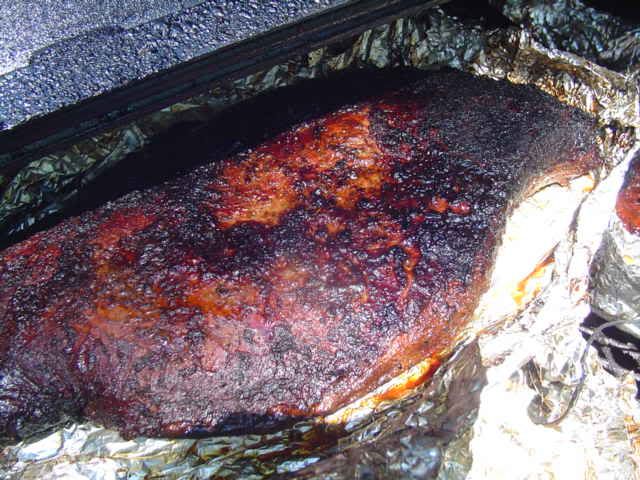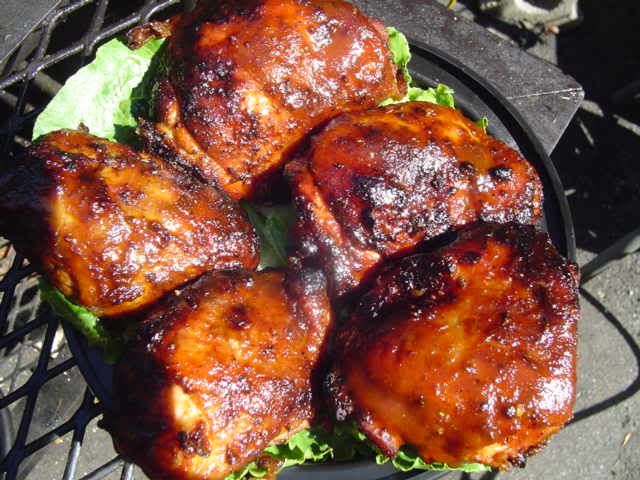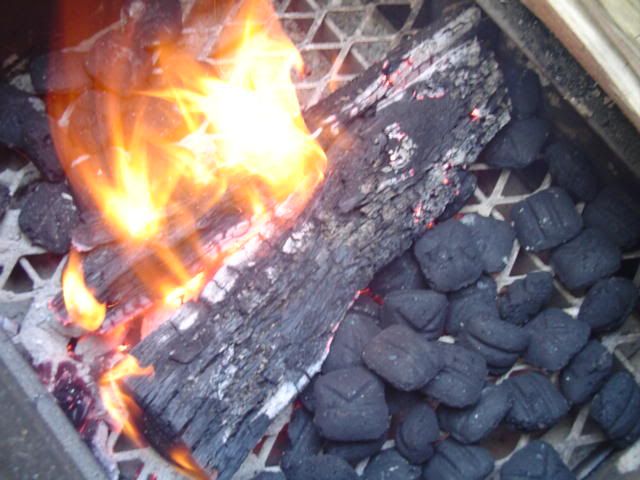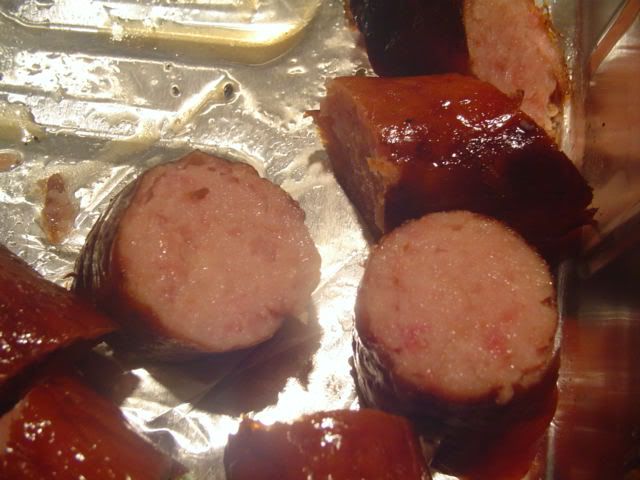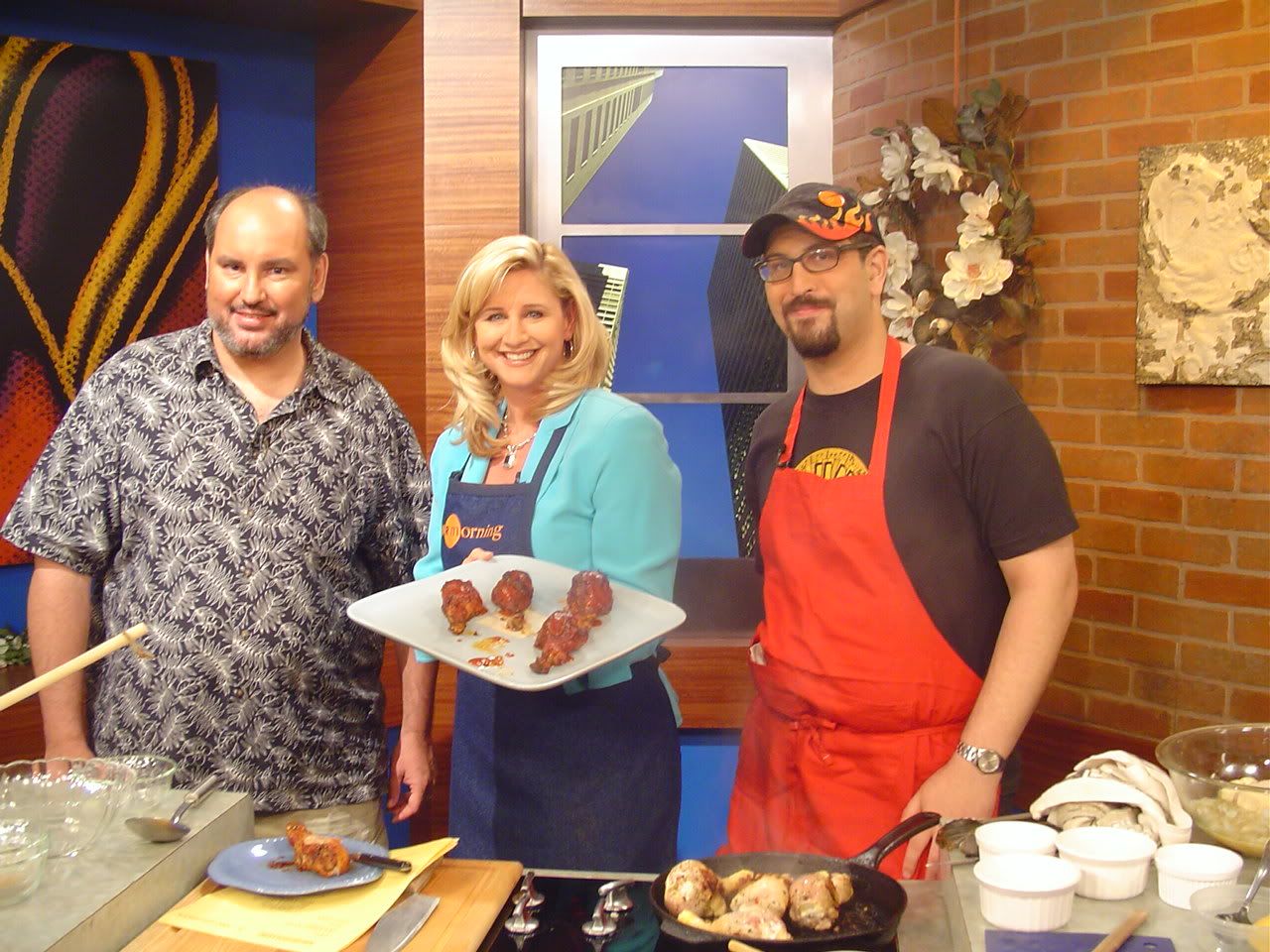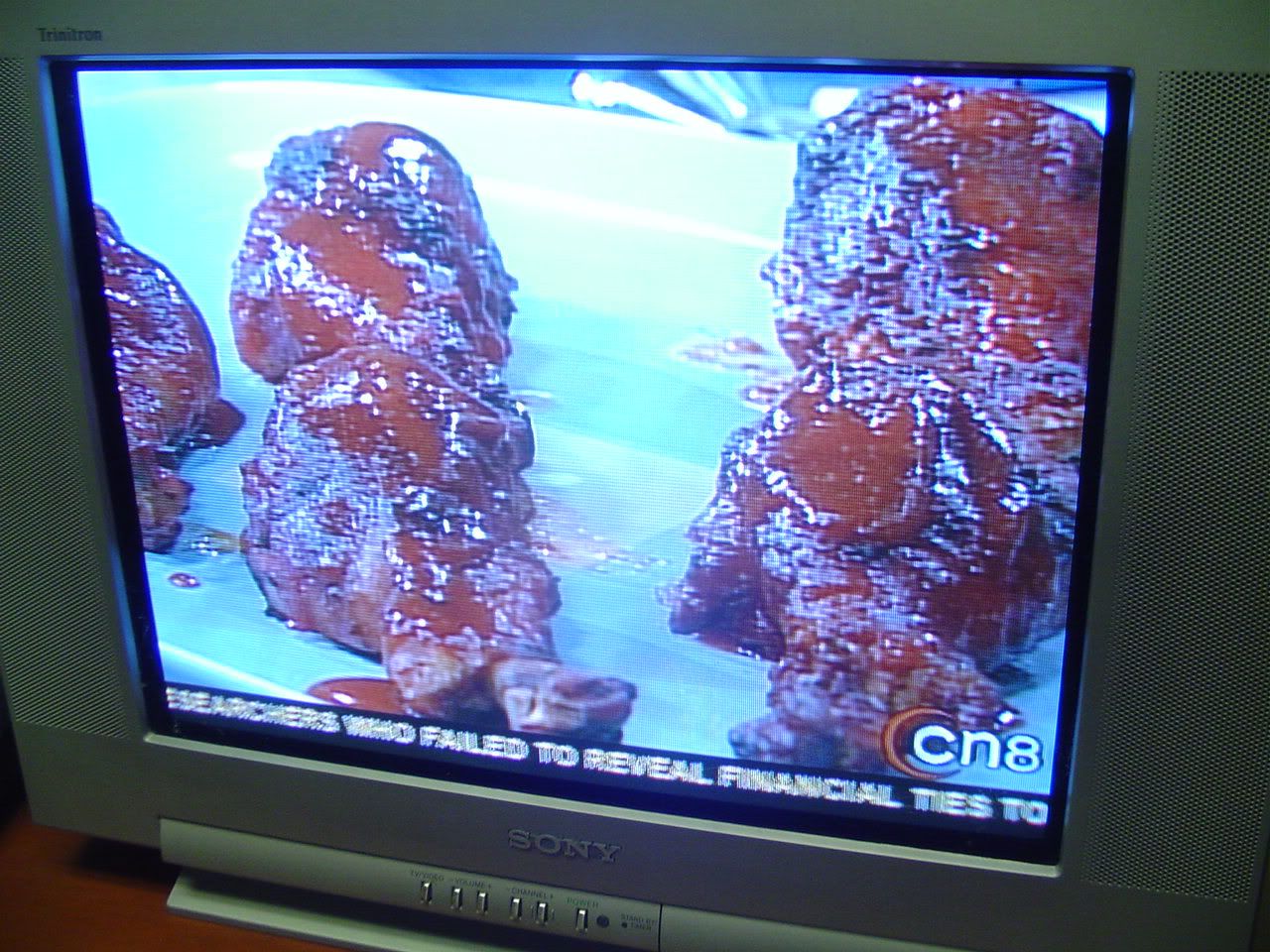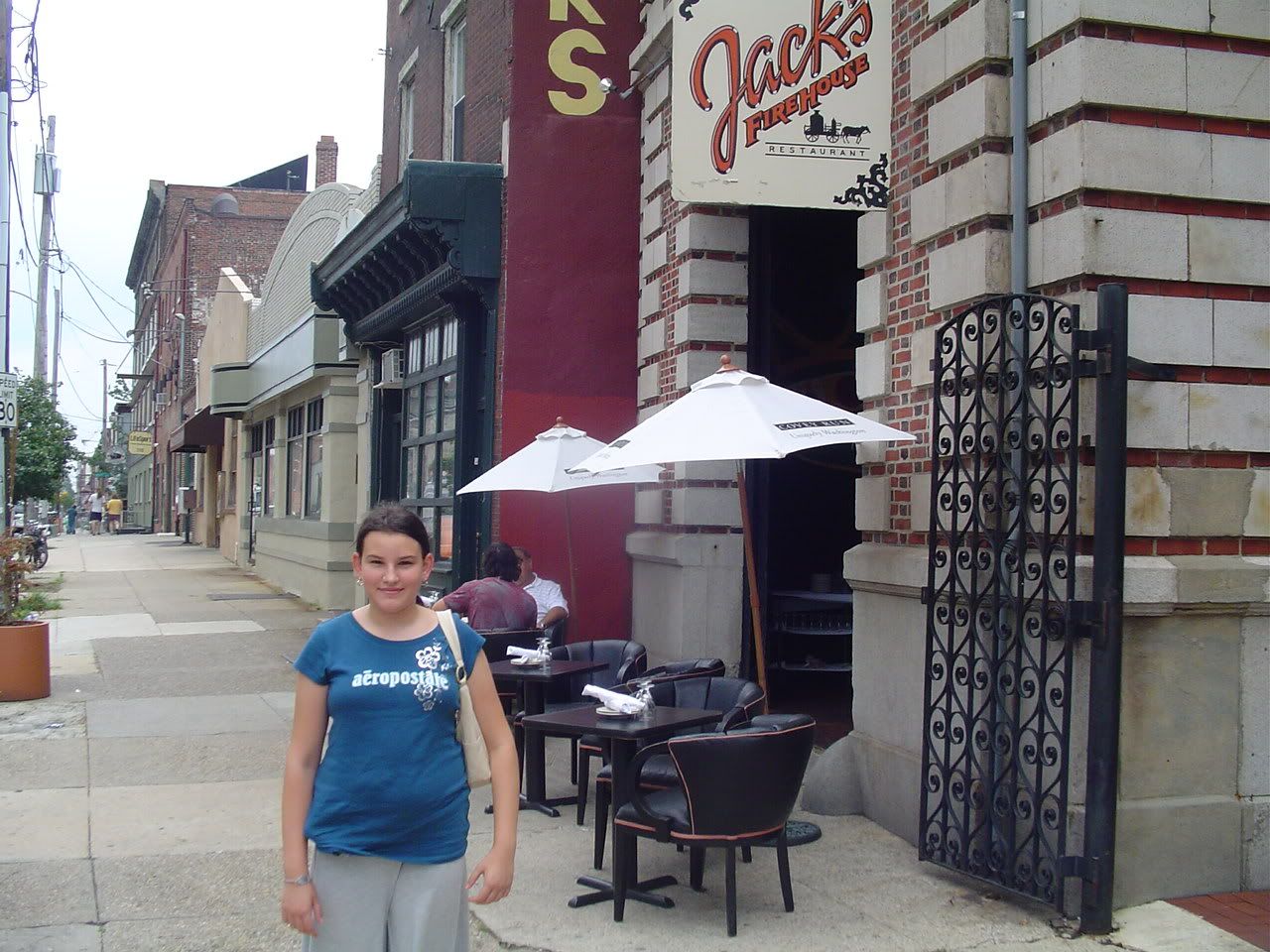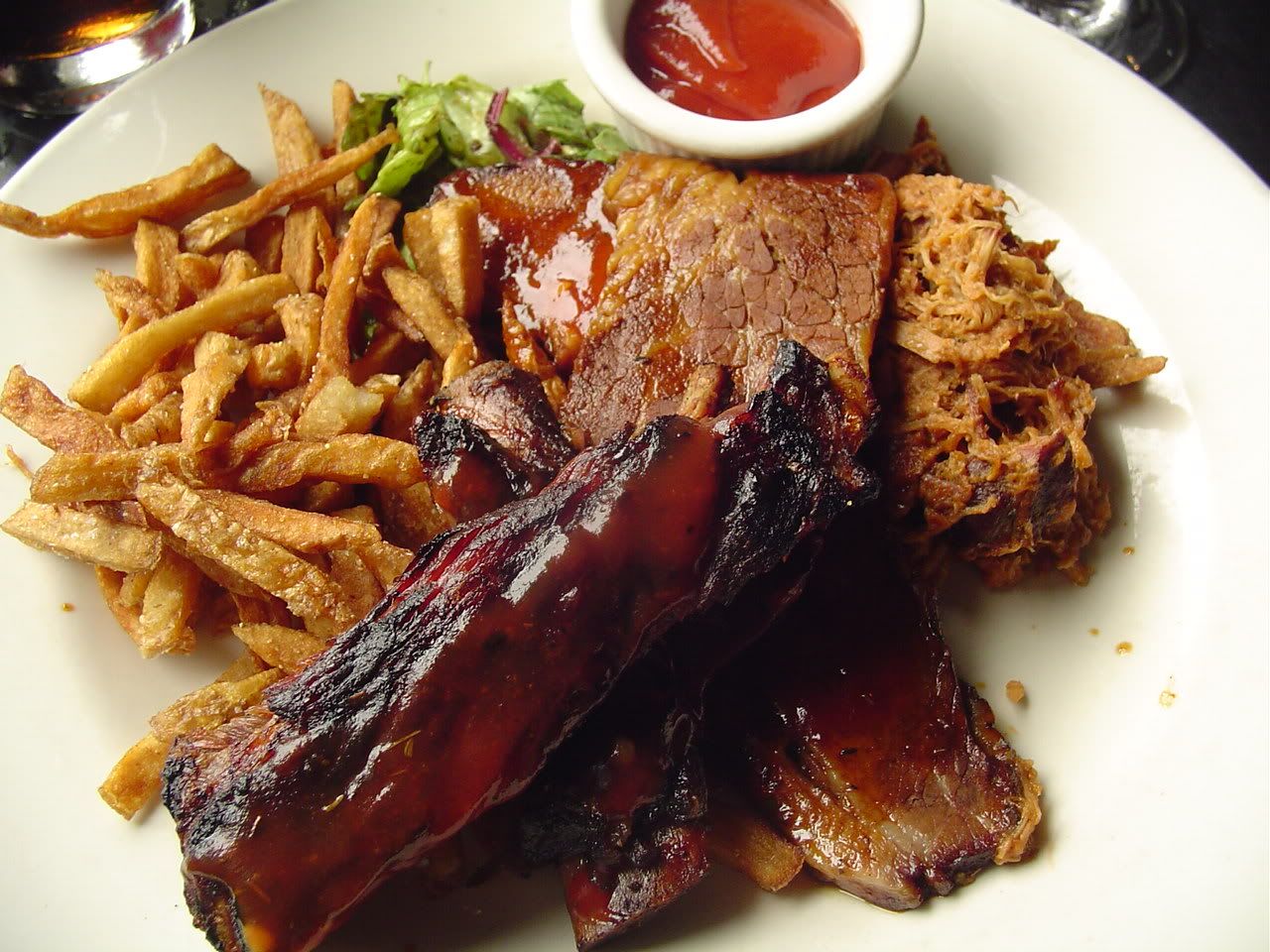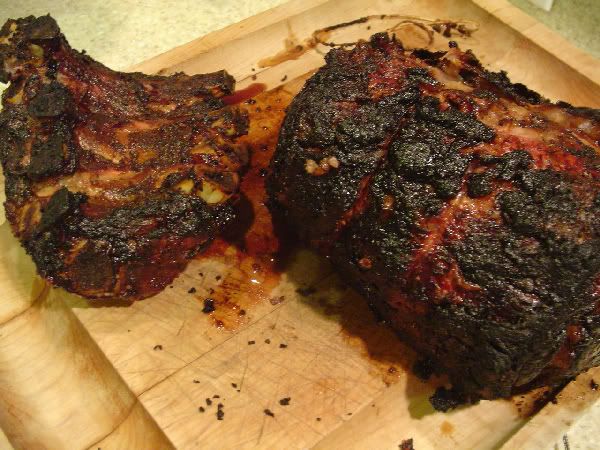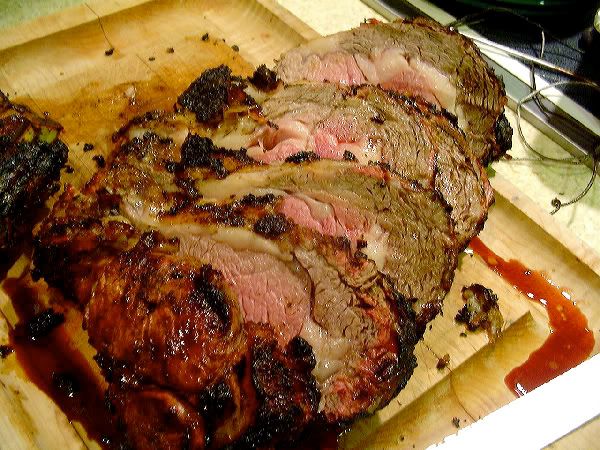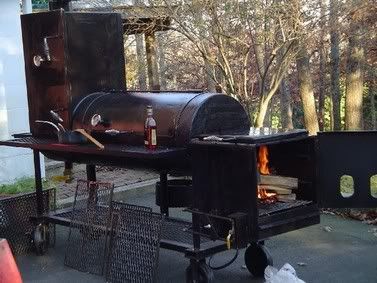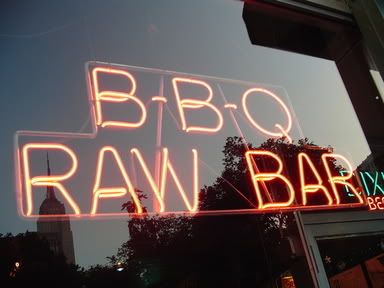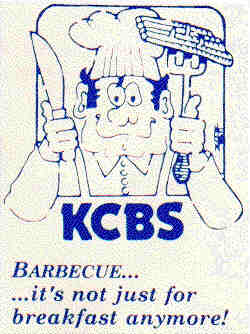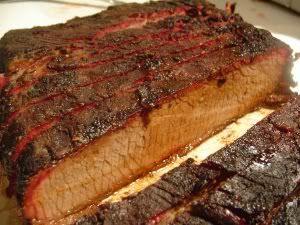
A blogging friend asked me for a brisket recipe today. While there are cookbooks I'd recommend for such things like Legends of Texas Barbecue, by Robb Walsh, or Championship BBQ by Paul Kirk, Dr. Bbq's Big Time Barbecue Cookbook, and most certainly, Mike Mills' Peace, Love and Barbecue, I figured I could post something here, as well. This may be way too elementary for some of you, but for others about to tackle their first, I'm going to try to help. It will be a bit long.
Let me start by saying that there's two kinds of brisket: a whole, or Packer Cut, which is anywhere from 10-15 or more pounds, and then there's a flat, which is usually under 10. The Packer Cut includes the point, which is a large fatty and almost triangular 'hump' that sits atop the flatter section (the flat). The point may include the Deckle, which is a section of fat that has a ribbon of meat running through it-- it is brisket perfection. But, before I lose myself in Deckle revelry, let me move on.
Many people choose to inject their brisket with flavors using a needle. It adds moisture and flavor inside the meat. If you want to do that, knock yourself out. It's very popular at competitions. Mixtures range from apple juice and/or broth to complex blends and mail-order compounds. I'll provide a link at the bottom if you're interested, but for now, we're going to keep it simple.
Place the meat on a clean cutting board, and trim any surface fat to about 1/4 inch. It doesn't need to be perfect. If there are any areas where the fat feels thick and hard, carefully try to remove those pockets-- they will never render out in cooking.
Next, make a slight, but detectable cut against the grain of the brisket, which are noticeable lines running across the meat. This will help you know where to start slicing later because you MUST slice the meat against the grain to ensure that it will be tender. The grain may change directions in other sections of the meat, so take note of that, and make a mark where appropriate.
Pat the meat dry with paper towels. Mix together in a bowl:
1/4 cup yellow mustard (French's or something like that)
2 Tbsp Worcestershire Sauce
1 tsp Soy Sauce
2 tsp White Pepper
1 Clove garlic (minced very fine or mashed into paste, even better)
Mix that well and place a light film on the brisket. This will help the rub adhere and form a nice crust. The mustard won't be noticeable.
For the rub:
3 Tbsp Black Pepper
2 Tbsp Garlic Powder
1 Tbsp Paprika
1 Tbsp Seasoned Salt
1 Tbsp Brownulated Sugar
2 tsp Onion Powder
1 tsp Dried Oregano
1 tsp Ancho Chile Powder
Combine well and sprinkle this liberally all over the brisket.
Place the meat into a smoker (I love cherry and oak for this) at 220 degrees and cook for about 1-1.5 hours per pound. When the meat reaches about 165 in the thickest part of the flat, and the color is set the way you like it, you can wrap the meat in two layers of heavy duty foil and continue cooking until the brisket reaches 190 degrees. At that point, carefully insert a fork into the meat, if you feel no resistance and you can twist the fork easily, take the meat off of the cooker, carefully reserve any juices that have accumulated, and let the meat rest, loosely tented. Separate the fat from the other juices and discard it. Save the juices for dipping the slices.
At this point, you can separate the point, if you so choose, from the flat, by sliding a knife nearly parallel with the flat, through what should be a noticeable band of fat between the two pieces of meat. You can put the point back on to continue to cook it, or chop it up into cubes, dip them in sauce and put them in a pan in the pit to let the sauce dry-- to make basic Burnt Ends-- yum.
To slice the meat, locate your original mark and slice the meat into 1/2 inch slices against the grain. Dip each one into the reserved juices. You can also combine the juices with your favorite bbq sauce.
Now, if you don't have the time or the will to handle cooking this bad boy in a pit the whole way, you can take it off after 6 hours or so and finish it in the oven at 200-- overnight, for instance.
If you don't have a pit at all, you can do this on a charcoal grill, if you have one big enough, by putting a drip pan (with a cup of water) under the brisket, and banking the coals over to one side-- over an air vent, ideally. Place the cover so that that air vent on top is over the meat. You will have to reload charcoal throughout the cook, as well as refill the water in the pan. Throw chunks of wood onto the coals, or make heavy duty packets of foil with chips inside and poke a few holes on top. With a gas grill wrap chunks in foil and poke holes in the top, or use chip packets. Add wood on either type grill every 1-2 hours, but a little at a time-- about 1/4 cup chips, or one chunk at a time.
With a regular oven, well, use the rub and cook it at 300. After 2 hours add some liquid (broth, wine, dark beer, thinned bbq sauce, etc), a couple of onions, some cloves of garlic, carrots, celery and potatos. Cover it and let it cook until it falls apart. It won't be bbq, but it will be tasty.
Here's some info about injecting brisket-- there's more info out there.
Read more!
